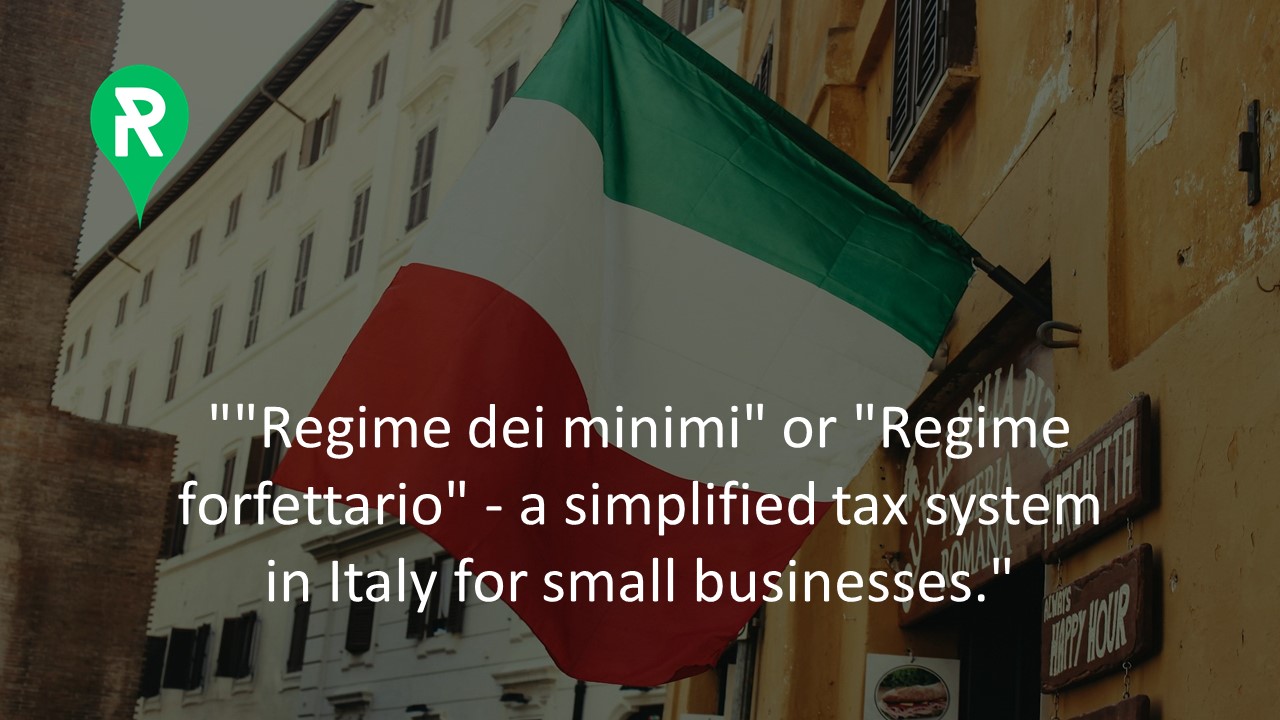Italy attracts entrepreneurs from around the world with its cultural heritage and favorable business environment. Dolce Vita is the dream of many who have had the opportunity to experience this beautiful country. However, before starting a business in Italy, it is important to understand the local tax system. In this context, the tax regime “Regime dei minimi” or “Regime forfettario” deserves special attention. Let’s explore how this tax approach can facilitate the start of your entrepreneurial journey in Italy.
As of 2024, Regime forfettario is the only available favorable tax regime in Italy. Regime forfettario was introduced in Italy in 2015 as part of legislative changes aimed at improving conditions for entrepreneurs, especially those with small businesses. This tax regime was created to reduce the tax burden on small businesses and individual entrepreneurs, as well as simplify tax payment procedures. As a result, entrepreneurs choosing Regime forfettario receive certain tax benefits and simplified tax obligations.
What benefits does the simplified tax system provide in Italy?
- 5% tax for new companies or sole proprietors for the next 5 years. After 5 years, the rate changes to 15%.
- Taxable income is calculated based on a coefficient ranging from 40% to 86%, depending on the type of activity, allowing payment of 5%/15% on only a portion of the income. The calculation of taxable income is made after deducting social contributions.
- The tax replaces personal income tax (PIT), value-added tax (VAT), and local taxes.
- Simplified document management system.
- Simplified reporting system. Accounting services for Regime forfettario are twice as cheap compared to the general tax system.
- A discount can be requested on social contributions. The minimum annual contribution is 3,900 euros, but this amount can be significantly reduced. The standard minimum social contribution rate is 26%
Conditions for using Regime forfettario
- 85,000 euros – annual income threshold. In case of exceeding, from the next year, a transition to the general IRPEF system with a payment of 23-43% is required.
- Note: The threshold is calculated proportionally to the number of months of using the tax regime. For example, if you use Regime forfettario from July, the income threshold will be 42,500 euros.
- 20,000 euros – annual limit for expenses related to employee salaries or hiring contractors.
- 30,000 euros – threshold for income from employment or income equivalent to employment for the previous year. In addition to running their own business, entrepreneurs are not prohibited from working in another company, but there is a threshold for income from employment. If exceeded, the use of the simplified tax system will be prohibited.
- Prohibition of cooperation with a former employer. If you were an employee and decided to open a sole proprietorship in the simplified system to evade taxes, then the possibility of using Regime forfettario is closed to you.
- Only new businesses. If you had a business in a similar field in Italy before, you cannot use the simplified tax system.
Which forms of business can use Regime forfettario?
- Individual entrepreneurs (Partita IVA): Individuals engaged in entrepreneurial activities without forming a legal entity.
-
- Artisans (craftsmen)
- Merchants (traders)
- Professionals
- Limited partnerships (SAS): In this form of business, there are two types of participants – managers who bear unlimited liability, and shareholders who are liable only within the limits of their investments.
- General partnerships (SNC): a form of business in which all partners bear full, equal, and personal responsibility for the company’s obligations.
It is noteworthy that limited liability companies (SRL) and joint-stock companies (SPA) cannot benefit from the simplified tax system.
In conclusion
Italy offers excellent opportunities for small businesses and startups thanks to the simplified tax regime with a fixed rate Regime dei minimi or Regime forfettario. Entrepreneurs from around the world can embrace the Italian lifestyle without having to pay higher taxes than you can also benefit from.
Please note that this article is not tax advice but is purely informative.
If you wish to receive consultation on Italian tax law, are considering moving to Italy, or opening a business in Italy – contact us!






